Romania, August 8-16
We crossed from Moldova into Romania near Galati and drove through the plain created by the Danube and its tributaries until we reached Bucharest. There we encountered the city’s fabled traffic where drivers apparently believe that the horn is more important than the steering wheel. Mercifully, we reached our Ibis hotel without incident.
Bucharest is dominated by the Palace of Parliament, which yields only to the Pentagon as the world’s largest administrative structure. Following our tour, the kindest adjective we could find for this last expression of the Ceaucescus’ megalomania is “colossal.” Each enormous hall reflected a different architectural style, thanks to the “imagination” of the architect, alleged to be Elena Ceaucescu’s niece, who was 28 years old when the project started. The view from the balcony on the principal façade, looking down the Bulevardul Unirii, the Ceaucescus’ answer to the Champs Elysees, is impressive, especially when framed with the Romanian, European Union, and NATO flags. The second reflects Romania’s high hopes for admission next year, and the third is the only such flag Todd has ever seen at the capitol of a NATO member state.

Palatul Parliamentului, Bucharest
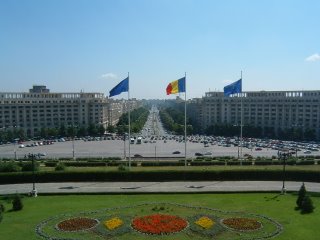
Bulevardul Unirii from Palatul Parliamentului, Bucharest
After two days of urban sightseeing (about right, we thought) we drove into the Carpathians, which combine the fun of mountain sports with the eeriness of the Dracula legend. (En route we stopped at Lake Snagov, the site where Vlad the Impaler may—or may not—be buried.) We stayed at Poiana Brasov, Romania’s Sun Valley, in a hotel we had used on a ski trip from Moldova 10 years ago, good then and even better now, and ate venison and boar at local game restaurants. We were fortunate in dining two evenings with Arnaud and Alexina Mille and their son Arthur, whom Georgia seemed intent on kidnapping. The Milles embodied our hopes for Europe, for he is a French fish broker with considerable work experience in Scotland, she is Romanian and works for a Turkish construction company thanks to her university study of that language, and Arthur has both Scottish and Turkish middle names. Fittingly, they met on the internet.
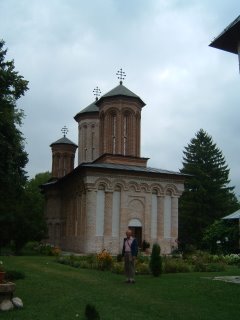
Dracula's (supposed) burial site, Monastery Church at Lake Snagov
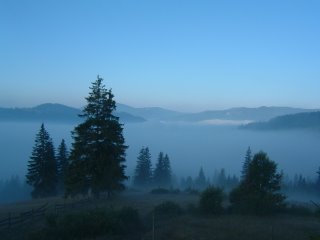
Morning mist in the Carpathians
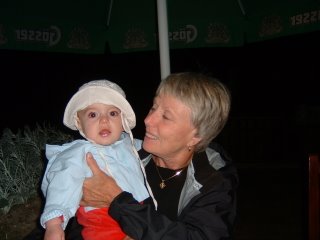
With Arthur Mille
We divided our days at Poiana Brasov between hiking on 1840-meter Mt. Postavarul, which has a good lift system but no snow guns, and touring the old heart of nearby Brasov, a city so completely German in the Middle Ages that Romanians could not spend the night within its walls. There we attended a German-language Lutheran service, conducted by a female pastor, at the famous Black Church with some 50 of the few Germans remaining in the area. However, we also visited some of Brasov’s Orthodox churches, including the cathedral, whose exterior reflects centuries of Habsburg rule.
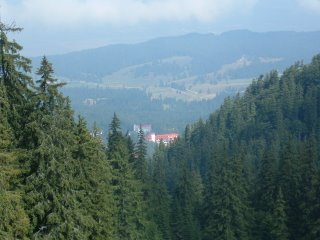
Poiana Brasov in the Carpathians
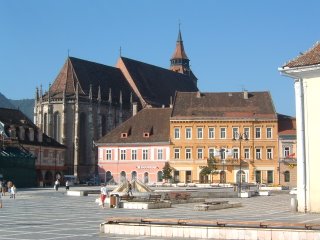
The Black Church and Piata Sfatului, Brasov
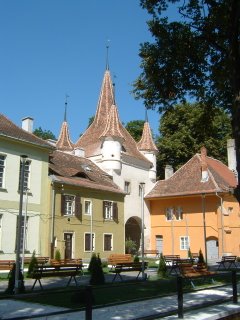
Catherine's Gate, Brasov
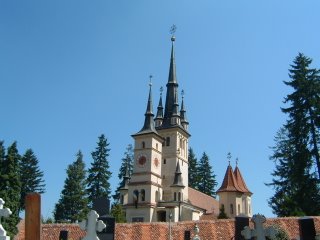
Church of St. Nicholas, Brasov
Our three days in Poiana Brasov were followed by three days in Gura Humorului, a town across the Carpathians in Bucovina, which was, like the Republic of Moldova, a part of the large medieval principality of Moldova. There we stayed at Casa Cristian, a small pension that we cannot recommend too highly (cristianhouse@yahoo.com). Family operated, it offers comfortable accommodations, extraordinarily good Moldovan food and drink (including vin de casa and fruit brandies) from locally grown and processed ingredients, classical piano music by the family’s talented son, and an exceptionally friendly atmosphere orchestrated by Constantin Rusu, the genial host. Our fellow guests were British—an interior designer, a novelist, an Oxford don, and an entrepreneur—all so interesting that the dinner table conversations were an added pleasure.
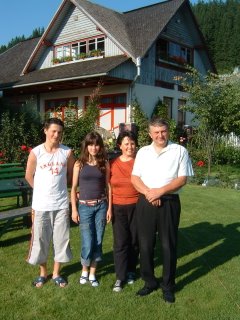
Cristian, Cristiana, Maria and Constantin Rusu
Our principal goal in Bucovina was to visit (and in some cases revisit) the region’s famous painted monasteries, which were generally built in the 15th and 16th centuries by St. Stephen the Great, his successors and other Moldovan nobles. The churches in these complexes, many of which are now inhabited by nuns, are distinguished by the vivid murals on their exterior walls. Remarkably well preserved, these frescoes have some common themes, especially the “Tree of Jesse” depicting Jesus’s genealogy and the “Last Judgment” portraying the wages of sin, with the remaining space largely devoted to representations of saints and (curiously to us) ancient savants such as Plato.
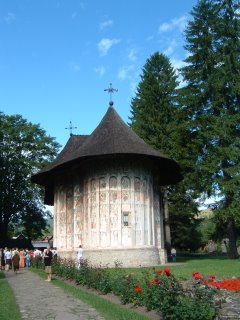
Humor Monastery
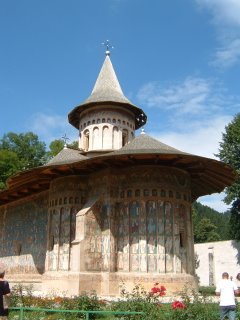
Voronet Monastery
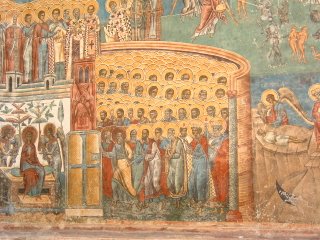
Crush of righteous souls awaiting their reward, Voronet Monastery
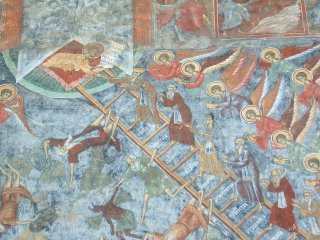
Ladder of Virtue, Sucevita Monastery
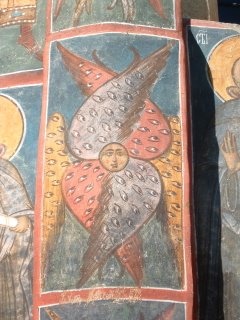
Angel, Moldevita Monastery
Traveling through Romania, we encountered many horse-drawn wagons, more per capita than in the Republic of Moldova, although the number there seems to have increased as Soviet-era motor vehicles break down irreparably. While sometimes a hazard (particularly after dark), they lend an element of charm to the countryside. Balancing the horse carts were a significant number of new cars registered in Western Europe, principally in Italy, which probably belonged to Romanians on vacation from their jobs as “guest workers” in the West. However, we did receive one invitation to sell Valeriu, which we politely declined.
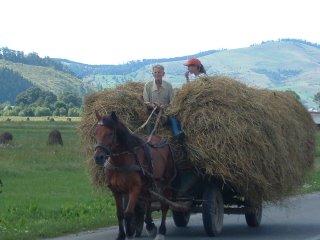
Hay wagon in Bucovina
















